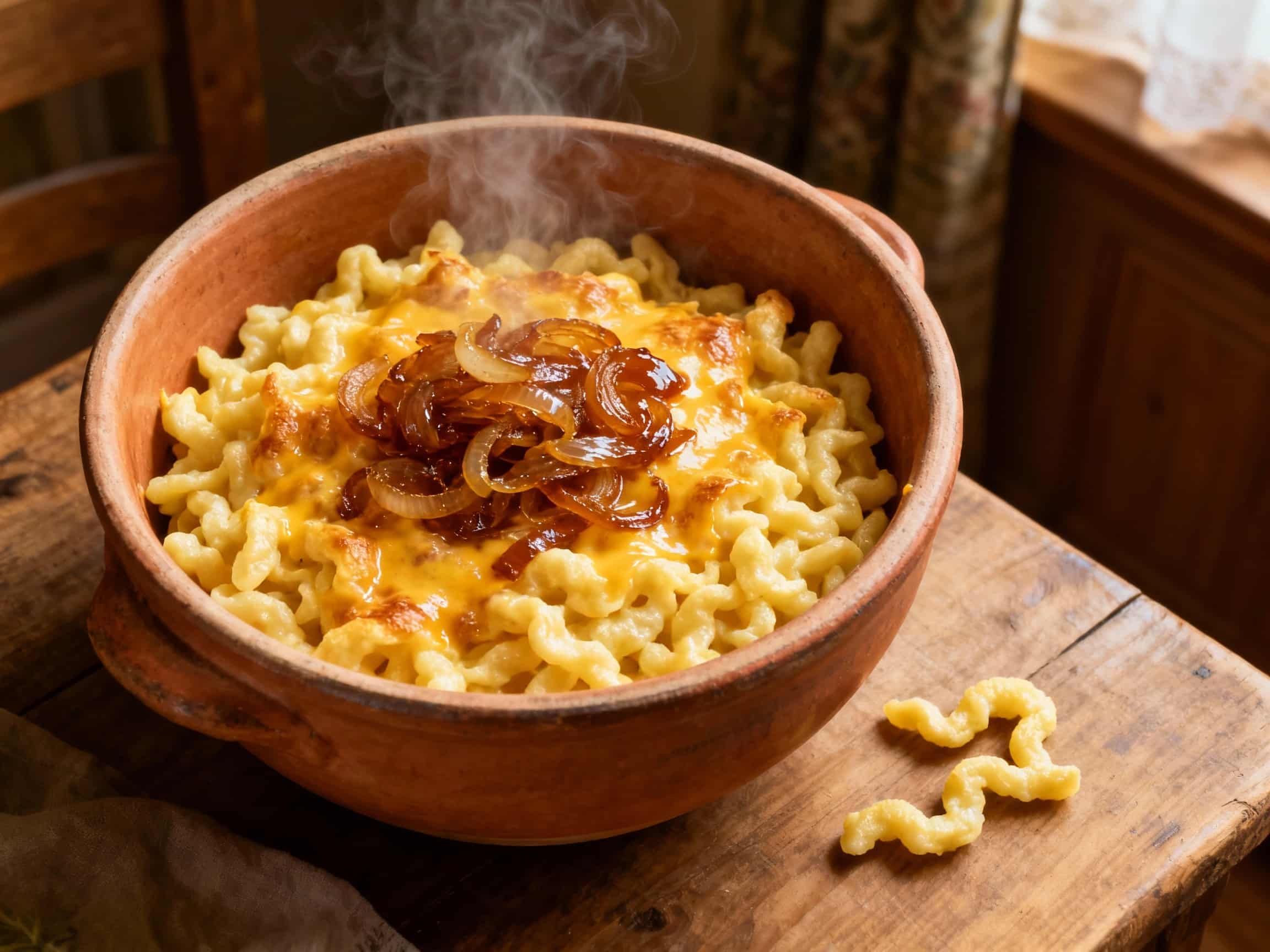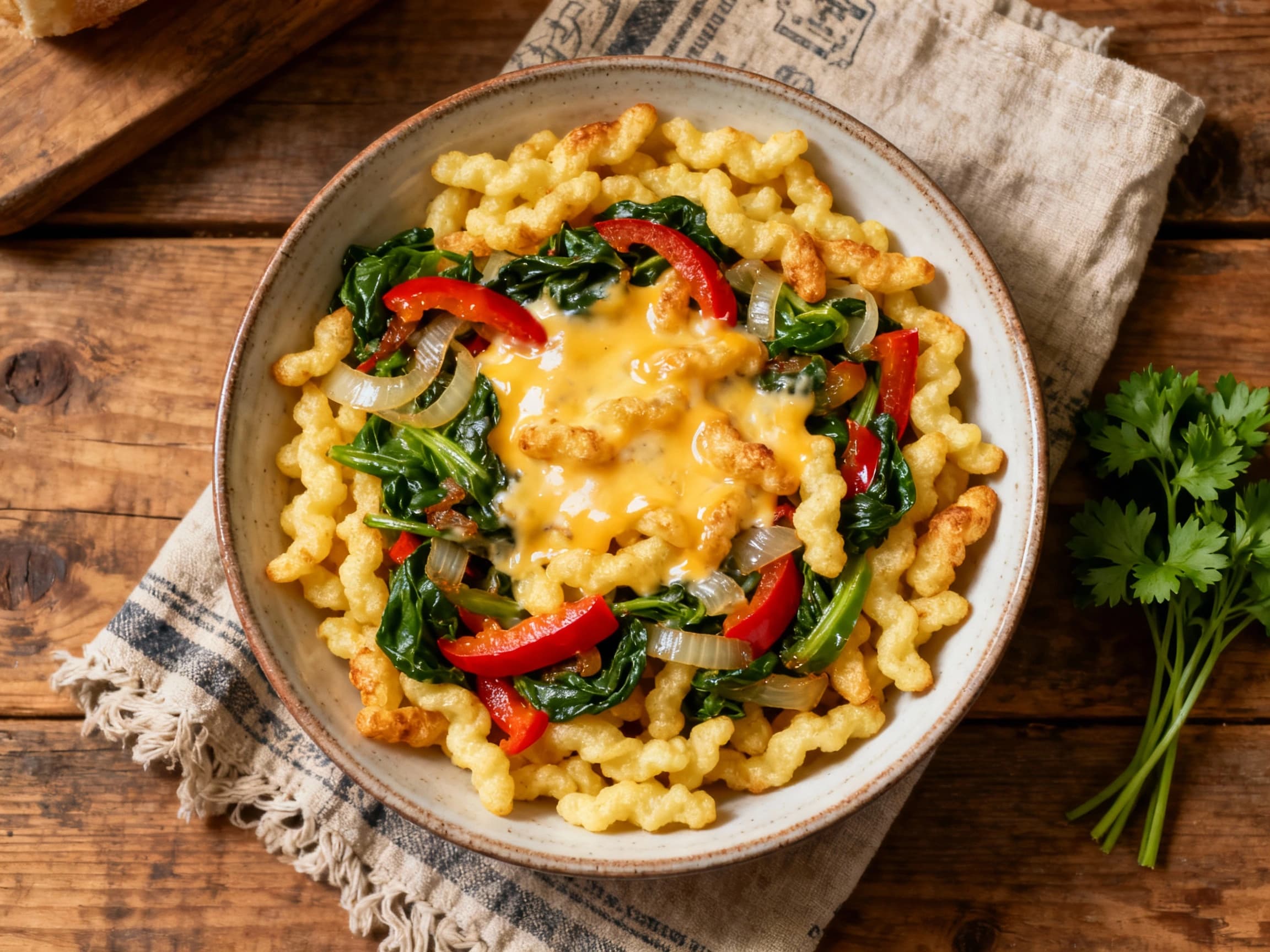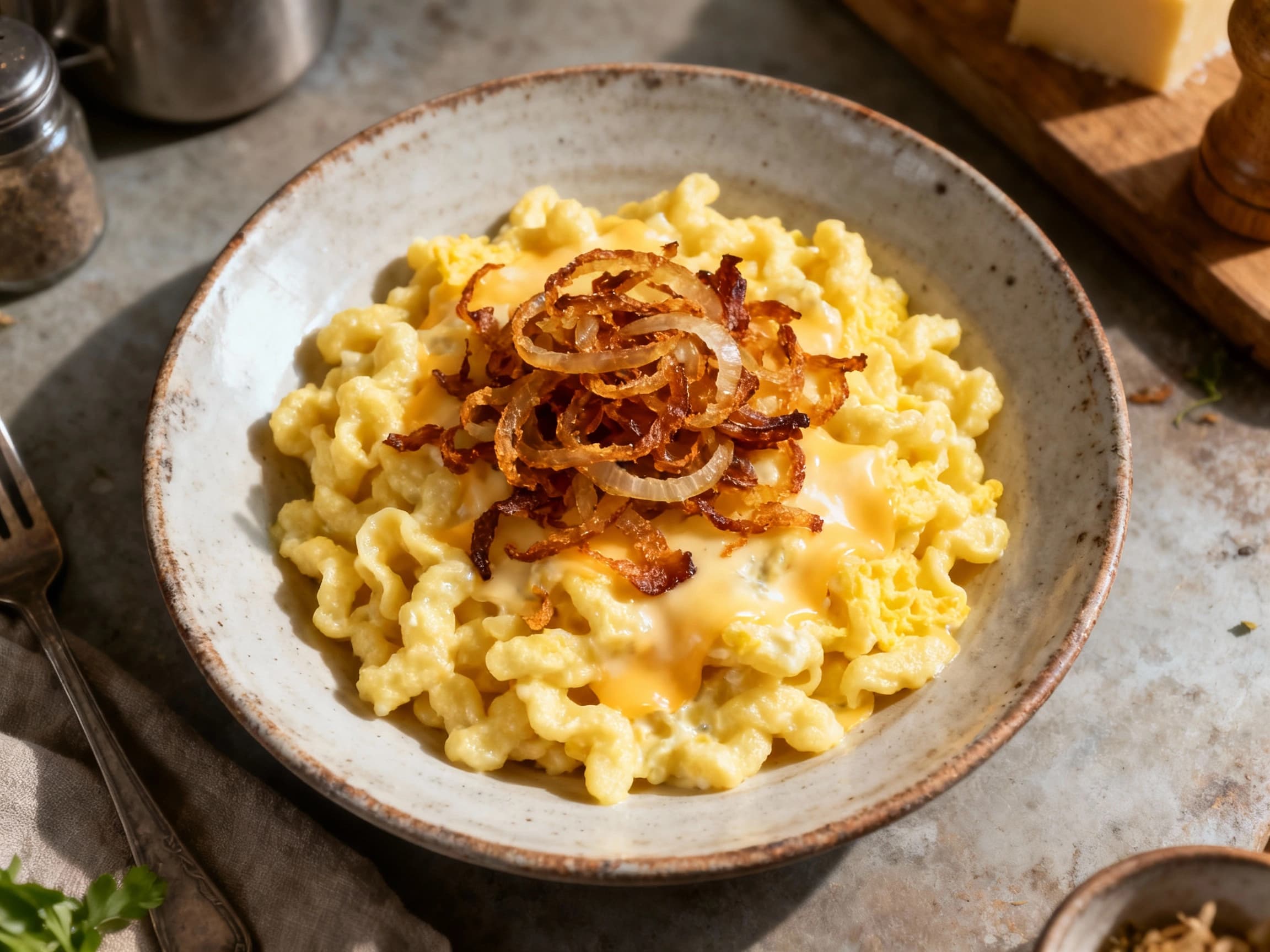
Käsespätzle
Käsespätzle
- Country
- Germany
- Region
- Swabia
- Recipes
- 3 Recipes
Dish information
Käsespätzle, a beloved comfort food originating from the Swabian region of southwestern Germany, is a testament to the region's rich culinary heritage. Its name literally translates to 'cheese egg noodles,' encapsulating its simple yet profoundly satisfying nature. The dish's roots can be traced back to at least the 17th century, where Spätzle, a type of soft egg noodle, was a staple made from a coarse flour, eggs, and water or milk mixture. The addition of cheese, particularly local Emmental or Gruyère, transformed it into the hearty Käsespätzle we know today. The dish is traditionally prepared by scraping or pressing the Spätzle dough directly into boiling water, creating irregular shapes. Once cooked, the Spätzle are layered with generous amounts of grated cheese, often a mix, and then baked or pan-fried until melted and gooey. The crowning glory is usually a topping of sweet, caramelized onions (Schmelzzwiebeln), which add depth and a touch of sweetness to the savory dish. Käsespätzle is more than just food; it's an emblem of Swabian hospitality and resourcefulness, often served in large portions as a main meal, particularly during colder months. Its widespread popularity has led to its inclusion on menus across Germany and beyond, celebrating its status as a quintessential German vegetarian delight.
Timeline
Spätzle dough preparation is documented, forming the basis for Käsespätzle.
Käsespätzle is described in historical texts as a common peasant dish in Swabia.
The dish becomes a popular staple in rural inns and homes in southwestern Germany.
Käsespätzle gains wider recognition and is increasingly found on restaurant menus.
Celebrations of Swabian cuisine solidify Käsespätzle's status as a national favorite.


